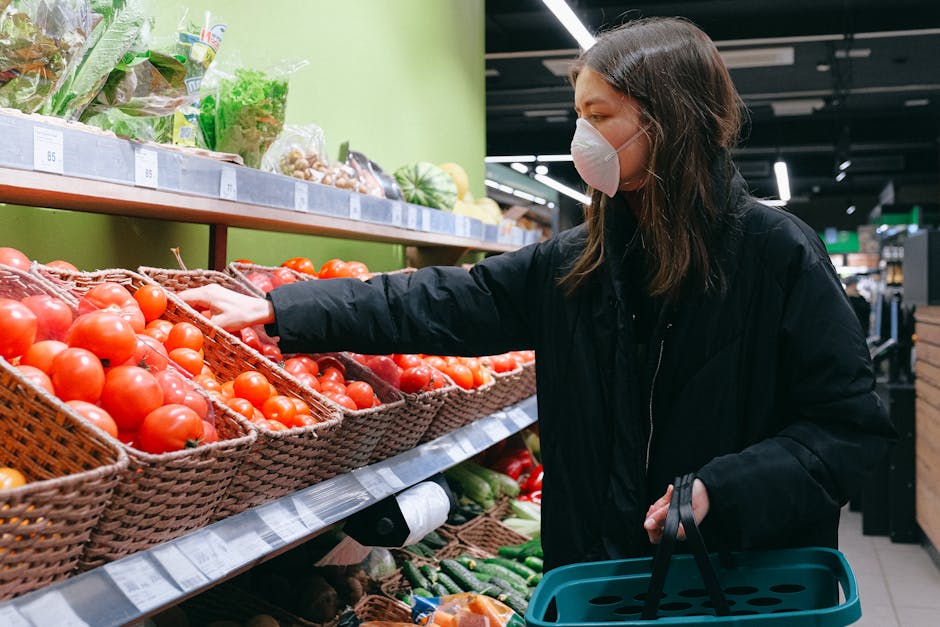
Understanding Late Blight: Phytophthora Infestans and Its Impact on Tomatoes and Potatoes
Late blight, caused by the oomycete Phytophthora infestans, is a devastating disease that affects tomatoes and potatoes, posing a severe threat to both commercial fields and home gardens. This pathogen, historically infamous for triggering the Irish Potato Famine in the 1840s, was once classified as a fungus but is now recognized as a water mold due to its preference for wet, humid conditions. Late blight can annihilate entire crops in a matter of days, making early identification and prevention crucial to averting widespread damage. In this comprehensive guide, we’ll explore how to diagnose, manage, and prevent late blight infections, ensuring your plants remain healthy and productive.
Why Late Blight Poses a Serious Threat
Phytophthora infestans, often referred to as the “plant destroyer,” is a highly destructive pathogen with multiple strains, some of which target both tomatoes and potatoes, while others are host-specific. The disease spreads rapidly through spores, especially under wet and humid conditions caused by rain, fog, dew, or sprinkler irrigation. A single lesion on an infected plant can produce between 100,000 to 300,000 sporangia (spore-containing structures) per day, each capable of initiating a new infection. These spores can travel for miles via wind, infecting plants on a massive scale.
The pathogen thrives in cool, moist weather, often causing entire fields to wilt and turn brown, mimicking frost damage. Beyond individual gardens, late blight can spread to neighboring plots and commercial farms, amplifying its economic and agricultural impact. Its ability to survive in dry, sunny conditions for up to an hour—and much longer in wet environments—underscores the urgency of proactive management.
Conditions Favoring Late Blight
As a water mold, Phytophthora infestans requires specific environmental conditions to proliferate:
- Humidity: Levels above 90% are ideal for infection.
- Temperature: Moderate ranges of 60-68°F (16-20°C) are optimal, though the disease can persist in temperatures up to 95°F (35°C) under extremely wet conditions.
- Moisture: Wet weather or irrigation practices that keep foliage damp accelerate spore germination and infection, often within 10 hours of exposure.
Hot, dry conditions can slow or halt the spread, but cloudy, windy weather facilitates long-distance spore dispersal, increasing the risk of outbreaks. Understanding these conditions is key to timing preventive measures effectively.
Identifying Late Blight on Tomato and Potato Plants
Late blight typically manifests later in the growing season, often after blooming, when weather conditions favor the pathogen. Recognizing the early symptoms is critical for timely intervention. Look for the following signs:
- Leaves: Small, water-soaked lesions that expand into large, irregular purple-brown blotches with an oily appearance and green-gray edges. Under high humidity, grayish-white fungal threads and spore-producing structures may be visible on the leaf undersides using a hand lens.
- Stems and Petioles: Infections spread from leaves to stems, turning them brown and enabling prolonged spore production.
- Fruit: Brown, greasy-looking spots often start on the shoulders of tomatoes due to spores landing from above. These spots enlarge into leathery patches on both green and ripe fruit. While unaffected parts may be edible, consuming infected fruit is not advised due to potential bitterness and secondary rot.
If conditions become less favorable, lesions may exhibit a dead, brown center surrounded by collapsed, grayish-green, or yellowish tissue. Regular monitoring, especially during wet weather, is essential to catch these symptoms early.
Monitoring and Scouting Your Garden for Late Blight
Experts recommend inspecting your garden at least twice a week for signs of late blight, increasing frequency during periods of wet weather. Focus on high-risk areas such as:
- Low-lying spots prone to water accumulation.
- Densely planted sections with poor air circulation.
- Areas near woods or hedgerows that retain moisture.
Late blight may affect only parts of a garden initially, so thorough scouting is vital. Resources like the USAblight portal, managed by North Carolina State University, allow growers to check local infection reports, submit samples for testing, and receive alerts about favorable conditions in their region.
Managing a Late Blight Infection
Once late blight is confirmed, swift action is necessary as there is no complete cure. Here are key management strategies:
- Remove Infected Plants: For severe infections, uproot or cut plants at the soil line, bagging them immediately to prevent spore dispersal. Destroy plants on dry, sunny days to minimize spore survival, though immediate removal is critical during prolonged wet weather.
- Resistant Varieties: Grow tomato cultivars like ‘Mountain Magic’ cherry tomatoes, which offer resistance to late blight and early blight. However, resistance can break down under highly favorable conditions, so other preventive measures remain essential.
- Source Healthy Plants: Purchase seedlings from reputable suppliers guaranteeing disease-free stock, and inspect them thoroughly before planting. Saved heirloom seeds are generally safe if properly dried, but hybrid seeds may not grow true to type.
- Crop Rotation and Weed Control: Rotate nightshades (tomatoes, potatoes, eggplants) with unrelated crops annually, and eliminate weeds like hairy nightshade (Solanum physalifolium) that can host the pathogen. Monitor nearby plants like petunias for signs of infection.
Potatoes are equally susceptible, and infected tubers or greenhouse-grown nightshades can further spread the disease. Vigilance across all potential hosts is crucial.
Preventing Late Blight in Your Garden
Prevention is the most effective defense against late blight. Implement these practices to minimize risk:
- Remove Volunteers and Weeds: Clear volunteer tomato and potato plants, as well as wild nightshades, which can harbor the pathogen over winter on seeds or tubers.
- Inspect Starts: Ensure all transplants are symptom-free before planting.
- Water Wisely: Avoid overhead irrigation; water at the base of plants to keep foliage dry and reduce humidity.
- Promote Airflow: Space plants according to cultivar recommendations and prune lower tomato leaves to prevent soil contact, enhancing air circulation and speeding foliage drying after rain.
These steps not only prevent late blight but also reduce susceptibility to other fungal diseases, fostering a healthier garden ecosystem.
Using Fungicides for Late Blight Control
While fungicides cannot cure late blight, they can manage early infections or be used preventively. Consult your local county extension agent to identify fungicides effective against regional strains. Key considerations include:
- Preventive Application: Apply fungicides before rain or when using overhead irrigation to protect plants.
- Frequent, Low-Dose Spraying: Regular applications at lower concentrations are more effective than infrequent, high-dose treatments. Ensure complete plant coverage for maximum efficacy.
- Common Fungicides: Chlorothalonil, found in products like Bonide Fung-onil Concentrate, is often used, though it’s banned in some regions. Always follow safety guidelines to protect yourself and the environment.
- Resistance Management: Rotate fungicides or combine them as advised by experts to prevent the pathogen from developing resistance.
Fungicide use should complement other preventive measures, not replace them, due to the risk of resistance and limited effectiveness in advanced infections.
The Role of Sexual Reproduction in Late Blight Evolution
The reproductive behavior of Phytophthora infestans significantly influences its adaptability. While asexual reproduction is more common, sexual reproduction—historically prominent in Mexico, the pathogen’s origin—generates genetic diversity through mutations. This leads to new, aggressive strains resistant to fungicides. Since the 1980s, sexual mating strains have emerged in the US, accelerating the development of resistant variants and complicating control efforts. Understanding this lifecycle highlights the need for adaptive management strategies and ongoing research into resistant plant varieties.
Conclusion: Safeguarding Your Crops from Late Blight
Late blight caused by Phytophthora infestans remains a formidable challenge for tomato and potato growers. Its rapid spread and destructive potential necessitate vigilant monitoring, immediate action upon detection, and robust preventive practices. By planting resistant varieties, maintaining proper garden hygiene, ensuring adequate spacing, and using fungicides judiciously, you can protect your crops and minimize the risk of outbreaks. Have you encountered late blight in your garden? Share your experiences in the comments below to help others learn from your journey. For further reading on tomato and potato diseases, explore our related guides.







